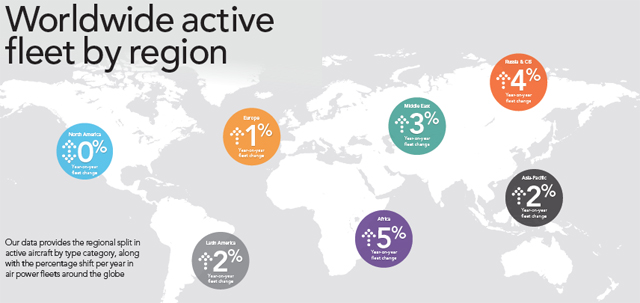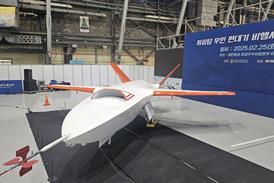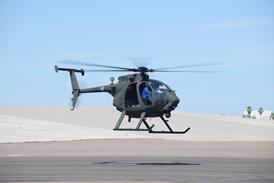If global instability is indeed the “new normal”, then the last 12 months brought more of the same, with major conflicts having continued to involve military air arms in the skies above nations including Afghanistan, Iraq, Syria and Yemen.
Tensions between the multiple countries engaged in Syria’s civil war have decreased since early 2016, when the scale of Russia’s involvement – specifically its in-country basing of a large detachment of fighters and attack helicopters – was of concern to other participants, such as the USA and Israel. Concerns about the likelihood of a diplomatically challenging in-flight incident involving their air forces appears to have diminished, while the parties continue to pursue different objectives: either engaging the threat of the so-called Islamic State group, or to ensure the continued survival of Bashar al-Assad’s authority.
One of the hottest topics for the coming year will be to measure reality against the campaign promises of US President-elect Donald Trump, who will take the keys to the White House in January. His administration’s foreign policy stance, such as its willingness to remain involved in conflicts in the Middle East – plus his posture towards the likes of China and Russia – could drive procurement decisions, for example on the pace of the production ramp-up for the Lockheed Martin F-35.

In the latter part of 2016, two of the USA’s ideological adversaries partially lifted the veil on their military capability and development plans. In September, North Korea’s Wonsan Air Festival strove to encourage “peace and friendship through aviation” for a small group of Western journalists and enthusiasts, barely two weeks after Pyongyang had faced almost universal condemnation for conducting its latest test of a nuclear weapon.
The air show offered a rare opportunity to gauge the condition of North Korea’s aviation assets, the bulk of which are limited when compared with those of any potential adversary. Our new directory shows its air force as having an active fleet of 944 aircraft, of which 572 are categorised as combat types. While this total includes several relatively modern models, such as the RAC MiG-29 and Sukhoi Su-25, its inventory is dominated by aged Chinese-built Shenyang F-6 and F-7 fighters, which would appear to be little more than combat curiosities in today’s operational environment.
November saw the biennial Airshow China event in Zhuhai, and a debut appearance by a pair of Chengdu J-20 stealth fighters: Beijing’s on-paper rival to the US Air Force’s Lockheed F-22. As is China’s intention, very little is known about the type’s true capabilities or intended role, but its development supports the nation’s drive to highlight its regional supremacy by developing air bases and other infrastructure on disputed islands. Its anti-access, area-denial strategy is a concern to numerous countries in the region and also the USA.
Also on show in Zhuhai for the first time were the People’s Liberation Army Air Force’s improved Chengdu J-10B fighter and upgraded Xian H-6H bomber, along with its recently delivered Xian Y-20 strategic transport. Two of the four-engined type have been delivered to date.
Totalling more than 64,000 aircraft, our annual overview of the global military inventory is powered by Flight Fleets Analyzer, which holds premium-quality data on more than 360,000 aircraft, also including airliners, rotorcraft and business jets.
This year’s directory details just over 53,000 aircraft that are in active service with militaries around the globe: an increase of 935, or almost 2%, from last year. This rise is largely the result of improved data on combat helicopter and training aircraft inventories, which have climbed by 513 and 368 units, respectively.
Also included are more than 4,600 aircraft that are the subject of firm orders, plus almost 7,000 that are pending deals or covered by letters of intent, including a potential 2,900 F-35s for the USA and its allies.
The US military’s share of the total in-service fleet remains static year-on-year, at 26%. Its fleet of just over 13,800 aircraft is bigger than the combined assets owned by our second- to seventh-ranked nations: Russia, China, India, Japan, South Korea and France. The only movement in our top-10 operator listing sees Pakistan enter in tenth place, where it replaces North Korea. Islamabad’s 949-aircraft total represents just short of 2% of the total global inventory.
Reflecting the overall increase to this year’s directory numbers, our map of the worldwide active fleet shows that all but one of the seven geographical regions have seen positive change, varying from a 1% rise in Europe to 5% in Africa. Having changed by only 35 units over the course of the review period, North America’s total of almost 14,200 aircraft translates to a static performance.
Across our six type categories, two – special mission aircraft and transports – have seen declines, although these were by a modest 31 and 9 units, respectively.
While the number of combat aircraft in service around the globe edged up by only 87 units, to just over 14,600, the last few months have brought considerable encouragement to the leading Western airframers vying for business.
Building on a stellar 2015, during which export deals were signed with Egypt and Qatar, Dassault has tasted further success with its Rafale, with India at last signing for 36 examples. However, this is a much more modest total than the 126 originally expected under New Delhi’s earlier medium multi-role combat aircraft requirement.
During the course of 2016, Kuwait signed for a batch of 28 Italian-assembled Eurofighter Typhoons, and it is also close to securing US authorisation to acquire 40 F/A-18E/F Super Hornets from Boeing. Qatar, meanwhile, is close to finalising a major order for 72 Boeing F-15QAs.
In late September, Romania joined the Lockheed F-16 operators club, taking a first batch of refurbished A/B-model examples from surplus Portuguese stocks. And in a significant move, France’s navy retired its last Dassault Super Etendards, leaving Argentina as the sole remaining operator of the carrier-based strike asset.
The F-35 made star appearances at the Royal International Air Tattoo and Farnborough air show in the UK during July, but suffered a recent setback as Justin Trudeau’s government in Canada has kept to its pre-election pledge to hold an open competition to replace its F/A-18A/Bs. In another potential boost for Boeing’s Super Hornet programme, Ottawa has announced its intention to acquire an interim batch of 28 F/A-18E/Fs.
Canada wants to maintain its industrial participation in the Joint Strike Fighter project, but will pit the type against rivals likely to include the Super Hornet, Rafale and Typhoon, plus Saab’s Gripen E.
Although it faces potential rejection by a nation that has a long-stated requirement for 65 production examples, the F-35 programme experienced a reasonably smooth 2016. The type achieved initial operational capability with the USAF – following the same declaration made by the US Marine Corps in 2015 – and early examples have now been delivered to Australia, Italy, Japan, the Netherlands, Norway and the UK to support initial training. A first pair of F-35Is also should arrive in Israel in mid-December.
Meanwhile, Northrop Grumman is advancing its work on the USAF’s highly secretive B-21 bomber, with the company likely to produce at least 100 of the stealthy type.
While less sophisticated in nature, Embraer’s A-29 Super Tucano – supplied by the Brazilian company via US prime contractor Sierra Nevada – made its first strikes in combat with the Afghan air force in April 2016. The service has so far received 15 examples from an initial 20-unit deal brokered via the USAF, with several still at Moody AFB in Georgia to support pilot training. The armed turboprop is progressively replacing the capabilities previously delivered using Afghanistan’s Mil Mi-35s, just three of which remain in operational use.
Recent activity in the special mission aircraft sector has included UK confirmation of a plan to buy nine Boeing 737-based P-8A Poseidon maritime patrols, plus a recent indication from Norway that it also wants to acquire five to replace its Lockheed P-3C/Ns and electronic warfare-roled Dassault Falcon 20s. France, meanwhile, will receive a pair of Beechcraft King Air 350s configured for reconnaissance tasks, and Australia is to field two Gulfstream G550s outfitted for signals intelligence gathering.
In the tanker arena, Boeing’s 767-derived KC-46A has passed its critical design review and appears on track to meet a contractually required 18 deliveries to the USAF in 2017. In the air-to-air refuelling sector, the US military can call on 590 tankers, representing 76% of the global fleet.
Airbus Defence & Space is to provide an initial two A330 multi-role tanker transports (MRTT) following a commitment from Luxembourg and the Netherlands. Further support for the pooled fleet initiative by NATO allies Belgium, Norway and Poland via the European Defence Agency could in time raise this total to eight.
A new player in the sector – Embraer’s KC-390 – also appears to be making solid progress, with the Brazilian airframer expecting to begin deliveries to its domestic air force in 2018. The tanker/transport appeared at the Farnborough air show in July during a multi-nation promotional tour, which also included visits to the Czech Republic and Portugal.
In the airlift sector, 2016 saw the final deliveries of the Boeing C-17 to Qatar and the United Arab Emirates. Flight-testing of the Antonov An-178 continues, while Airbus Defence & Space is still struggling to fully deliver with its A400M. Spain recently took its first example – becoming the sixth of a currently contracted eight nations to field the type – but the delayed introduction of tactical capabilities and a lingering power gearbox issue mean the European company has yet to add to its sales total through fresh exports.
Partly as a result of the A400M’s protracted teething problems, France has finalised a contract to acquire four Lockheed C-130Js, including two tankers, to support its combat search and rescue-roled Airbus Helicopters H225M Caracal.
Kuwait in 2016 announced a deal to buy 30 H225Ms, while Singapore is also to acquire 16 of the type and Boeing’s CH-47F Chinook. In the attack category, the UK confirmed an intention to replace its army’s Westland/Boeing Apache AH1 fleet with 50 AH-64Es.
One of 2017’s major topics will be the USAF’s T-X trainer contest, with Boeing/Saab and Northrop to fly clean-sheet candidates in the coming months. Recent activity elsewhere in the training sector has included Leonardo’s Aermacchi delivering the first of Poland’s M-346 Masters, and Aero Vodochody reviving production of its L-159 to complete one two-seat example as part of an order for Iraq.
Excluded from our listing are 685 fixed-wing aircraft and helicopters recorded as dedicated to VIP transport duties, and 480 used for research and development or experimental activities, including those assigned to bodies such as the UK’s Qinetiq.
Other exclusions include almost 5,200 aircraft that Fleets Analyzer records as in storage – also counting those involved in or awaiting upgrade – and piston-engined types, on which our database does not hold information. We also have removed aircraft tasked with performing functions such as calibration or mapping duties, target towing, skydiving or satellite tracking.
Source: Flight International


























